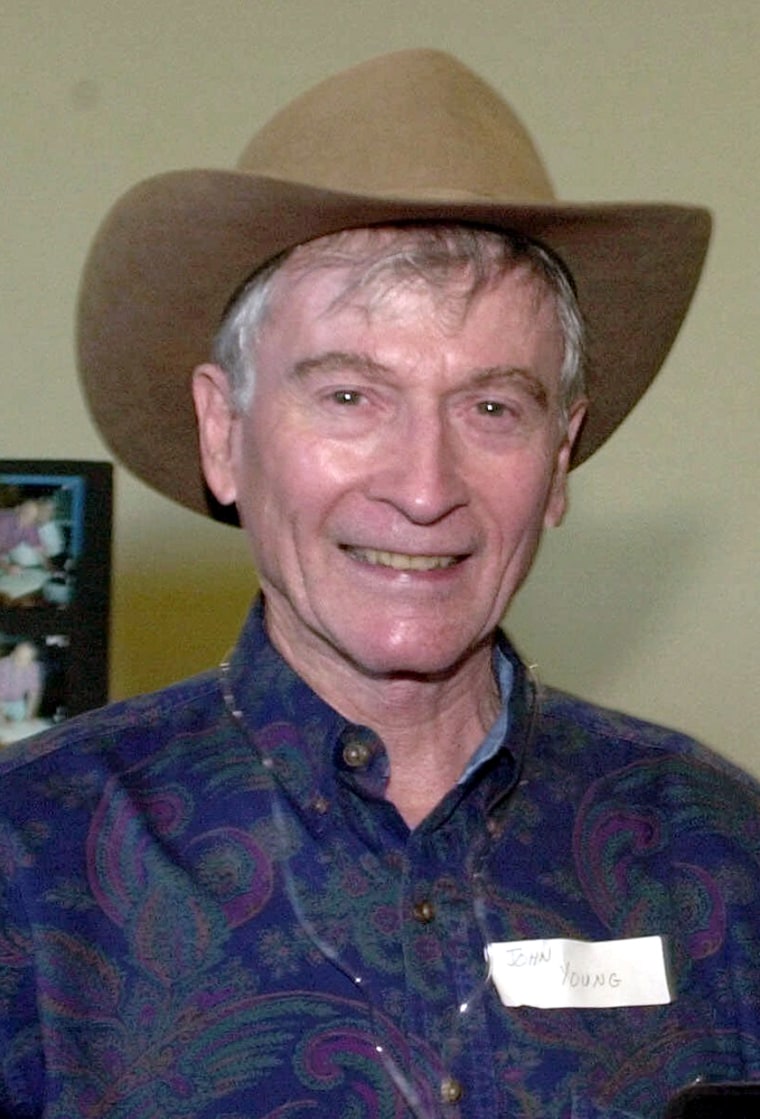Legendary astronaut John Young said Thursday, on the verge of his retirement, that NASA has not changed its safety culture since the Columbia accident but has done all it can to improve the space shuttle and should return to flight as soon as possible.
NASA and the nation should just accept the failure rate of 1-in-57 shuttle flights, Young said, stressing that space exploration is well worth the risk.
"I really believe we should be operating it, flying it, right now because there's just not a lot we can do to make it any better," said the 74-year-old Young, who is the nation's longest-serving astronaut, the ninth man to walk on the moon, and a man often described as NASA's conscience.
Hard to change NASA's ways
In an interview with The Associated Press two weeks before his retirement, the Gemini, Apollo and shuttle commander said it is difficult for a big bureaucracy like NASA to change its ways. He said it will probably be a long time before the space agency alters the way it thinks and behaves.
"I was in the astronaut office the other day, and I asked them how many people thought NASA had changed its culture, and nobody raised their hand," Young said. "There were about 100 people there, so that's how they feel right now."
The Columbia accident investigators blamed the disaster as much on NASA's afraid-to-speak-up mentality as on the chunk of foam that pierced the spaceship's left wing during liftoff.
Like so many others at NASA, Young regrets he did not make a fuss over the blow from the foam at the time. The outspoken astronaut, known for his blistering memos after the 1986 Challenger disaster, questioned an engineer three days into Columbia's doomed flight and was assured, "Don't worry. There's nothing. It didn't hit it."
"I worried about it. I always worry about damage. But there's nothing you can do about it if they said it's OK," said Young, commander of Columbia's inaugural flight in 1981.
Besides, he said, he never dreamed the reinforced carbon lining the edges of the wings could be damaged: "When I was flying it, the way they put it to me was that you could almost hit the carbon-carbon with a sledgehammer and nothing would hurt it."
'Very old vehicle'
Young, the first man to fly six times in space, acknowledged the shuttle is a "very old vehicle" and that given its complexity, it is difficult to predict what will go wrong next. But he said: "We just have to keep flying it the way it is, I believe."
Just last week, the space agency acknowledged it has yet to develop astronaut repair kits for Columbia-type gashes but said it would proceed anyway toward a May or June launch of Discovery.
"When you're developing the design and developing hardware, you make it as safe as you can when you start with, but once you get there, you take what you've got. You use it. We've done that with airplanes and spacecraft ever since we've been doing it," Young said. "Pretty soon you have to stop arguing about what's not right and go take what you've got and operate it."
Young said he decided to retire after 42 years at NASA because he was getting too old to handle the 12- and 14-hour workdays. He plans to continue working in the space program, perhaps as a consultant, and pushing the goal of "getting out of the cape and putting people on the moon."
Young said the United States should be doing two or three times what it is now doing in space exploration. NASA should be developing hypersonic vehicles to fly from here to Shanghai in three hours, massive rockets to lift payloads to the moon in order to industrialize it, and space systems for detecting and deflecting comets or asteroids that could threaten Earth, he said.
"The country needs it. The world needs it. Civilization needs it. I don't need it. I'm not going to be here that long," he said with a chuckle.
